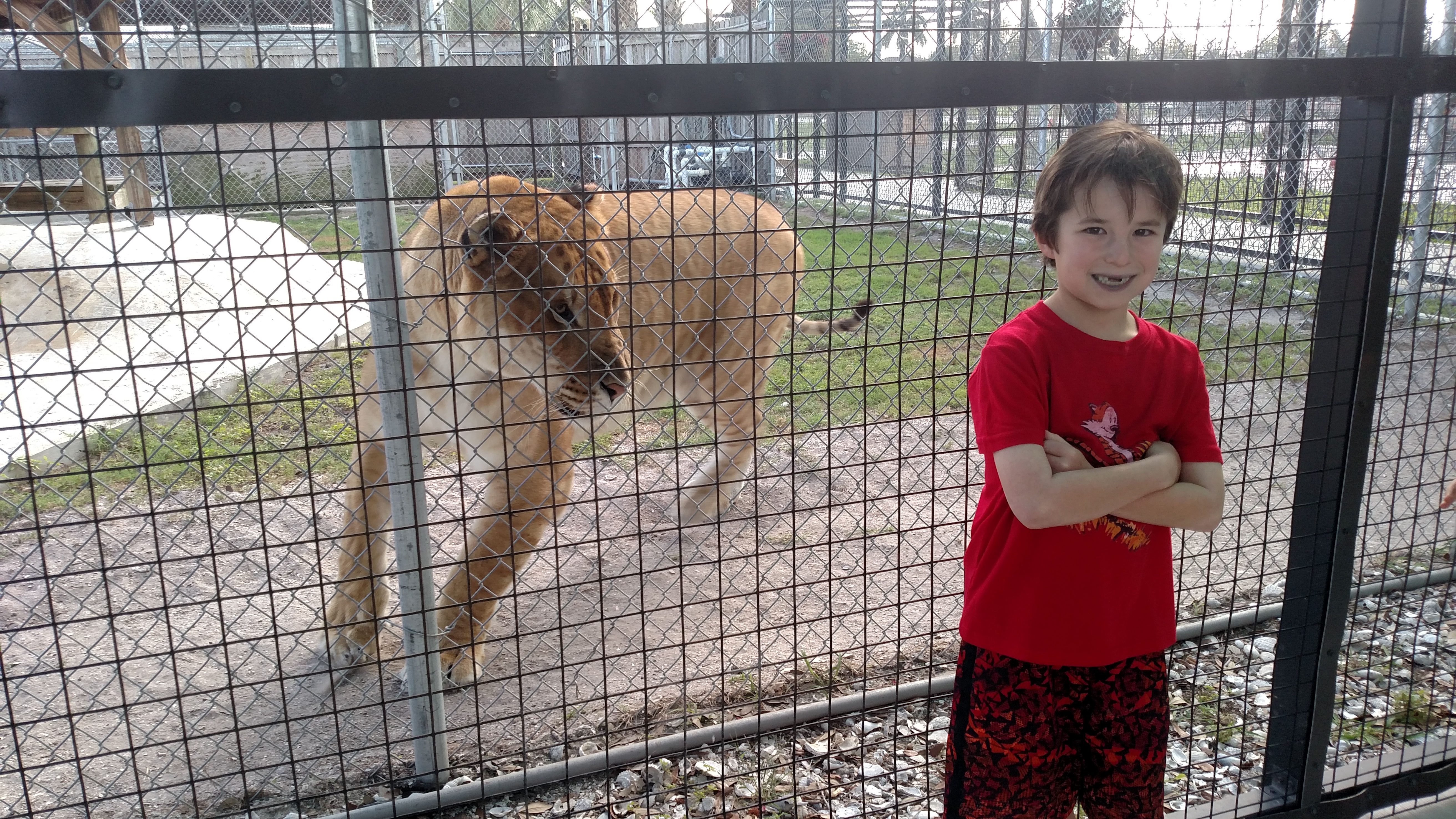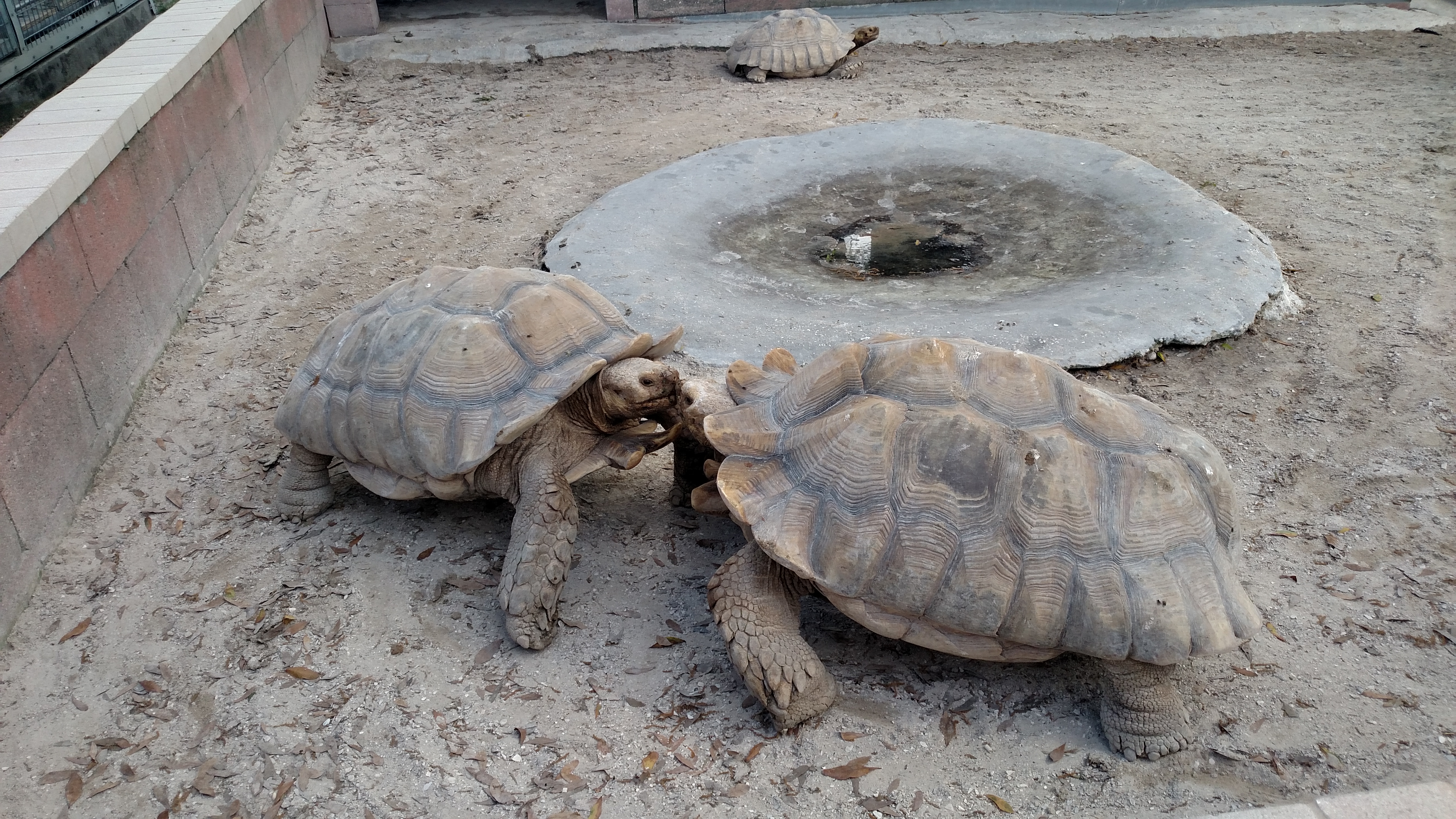Sarasota, Florida – We took a break from the beach to visit the lions and tigers and bears (Oh my!) at the Big Cat Habitat & Gulf Coast Sanctuary. It’s like a zoo, except all of the animals are rescues. In addition to 50-plus big cats, there are bears, wolves, chimps, monkeys, lemurs, tortoises and many many birds.
The highlight of the Big Cat Habitat is that it is home to two ligers. This rare hybrid species is the offspring of a female tiger and a male lion (as opposed to a tigon which is the other way around). At the Big Cat Habitat, the female liger, Mia, is a star of the “Big Cat Encounter”, where she performs some tricks and shows off her ferocious roar. The male, Brutus, is also a star because he is huge.
In fact, the liger is the largest cat in the world, with the biggest guy weighing in at 922 pounds! The liger’s massive size is due to absence of a gene that limits growth, resulting in a condition known as growth dysplasia (common in hybrids). Not exactly “skills in magic” but still impressive.
The ticket to the Big Cat Habitat includes two animal shows, which are entertaining and educational. But I think the main appeal of places like this is that the rescue animals are relatively tame. That means that they hang out at the front of their cages and they often engage with visitors.
I know, I know, it’s a shame the animals are kept in captivity. I agree, they belong in the wild. But some people think they need a cute lion cub or a snuggly teddy bear as a pet. Six months later, once the owner realizes why they are called “wild animals”, these creatures need a new home. The Big Cat Habitat takes them in, no questions asked. Often, rescue animals come from the government, which means they were confiscated from private homes or at border crossings. After living in such close proximity with humans, these animals cannot return to the wild.
The Rosaire family, which runs the Big Cat Habitat, also emphasizes the importance of “animal ambassadors”. These are trained animals that interact with people and as such play a critical role in raising awareness about wild-animal issues. (Eg, look what Flipper did for the dolphins.)
In addition to these two arguments for sometimes keeping animals in captivity, I will add one more. Most people don’t get many opportunities to see animals in the wild. Especially those of us who live in the city. Zoos and other similar facilities give us a chance to observe different species in person, and take a closer look, thus fostering love and respect for all of Mother Nature’s creatures.



Nice article, Mara. Thanks for the memories. Mom
Dear Mara,
I just came across your blog and all of your writing. I really love it! I’m a huge fan of lonley planet and am so impressed that you’ve written so much.
I also live in Somerville and I’d love to speak to you about Spanish (my daughter is bilingual). I didn’t see a contact email so I’m contacting you here.
Please send me an email if you can!
Stephanie Grey